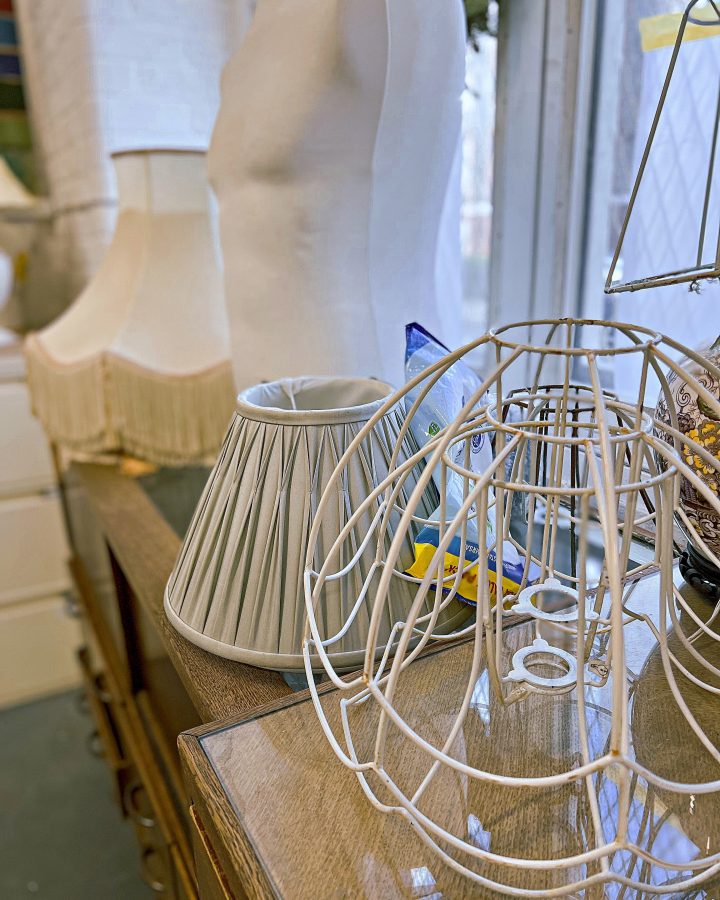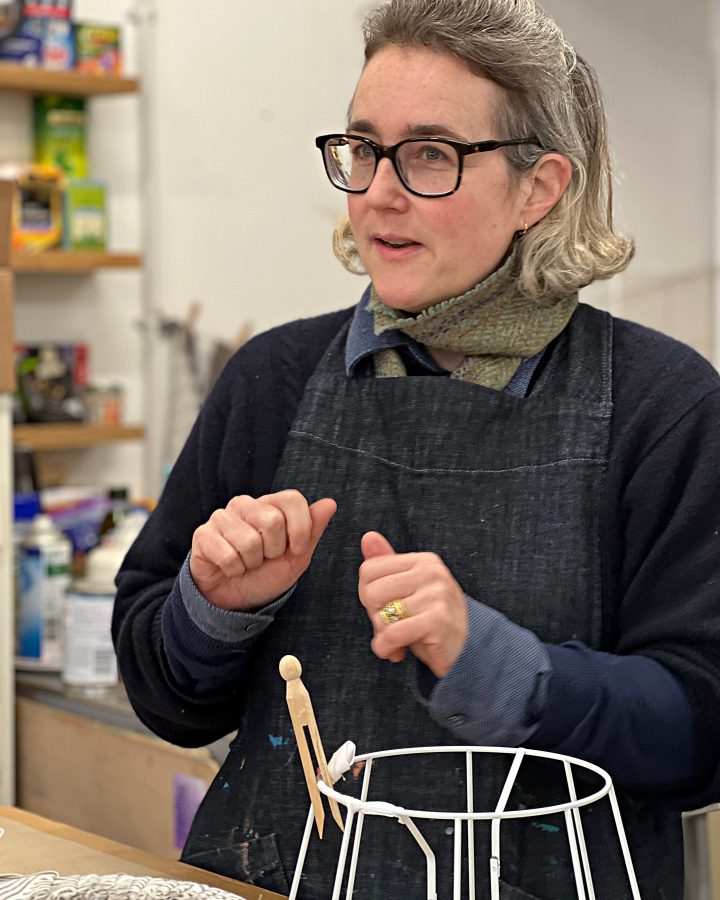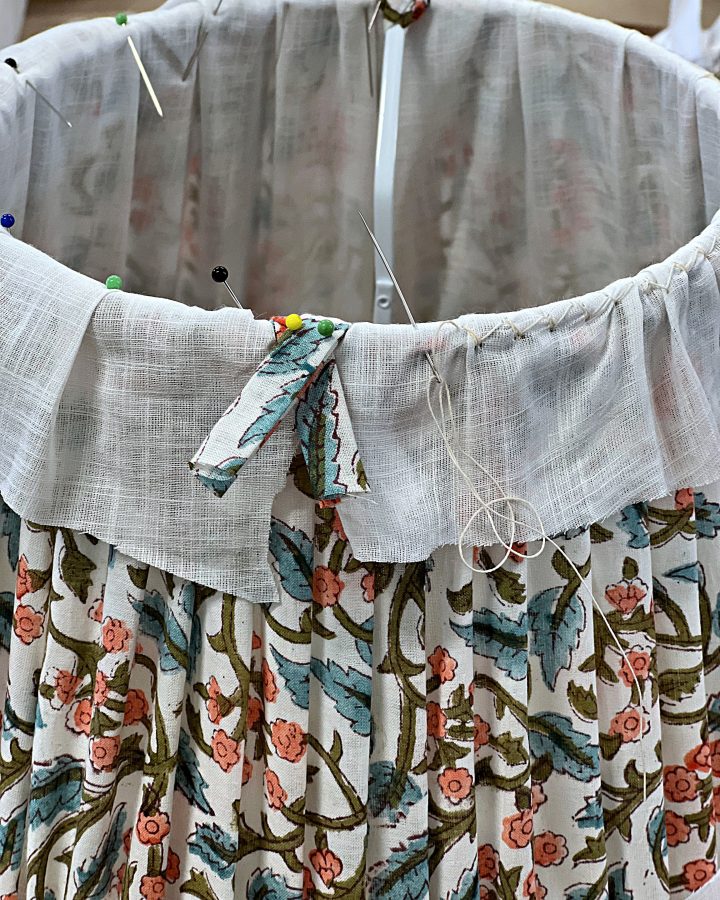
Being confined to our homes over the last couple of years, staring at the same walls every day when working from home, has sparked a boom in interiors. Neglected repairs, scruffy walls, those awful curtains you always meant to change after you moved in but never got round to, suddenly became urgent. I personally have redecorated, revamped all my floors, stencilled my steps, finally put up that towel rail, changed my horrible 70s taps and installed new shelves. Everyone has had the same idea which is why tradesmen have never been busier. (I look on the app Next Door to find my tradesmen, which has been a mixed blessing).
Lulu Lytle may be criticised for the expensive redecoration job ‘a Turkish bordello’ she did on number 10 Downing Street (although the photos you generally see are of her own house) but she’s bang on trend in terms of style. The shabby chic look, industrial, brutalist modern or pared-down Scandi interiors have made way for brighter jewel-like colours, exotic patterns on soft furnishings materials, a kind of vintage ethnic look. Lulu Lytle deserves credit for investing in and championing British crafts such as rattan-weaving which had fallen into disuse.
Lighting is something worth spending some money and time on, and I’ve seen patterned and pleated lampshades on sites like Pooky. Most of the shades sold commercially are glued together. We, on the other hand, are hand-sewing these shades, learning the ‘lampshade stitch’; two small stitches followed by a long sideways stitch. They aren’t cheap and now I know why. I spent last weekend learning how to make one at the Minerva workshop in Kentish Town. It takes two days just to make one small lampshade.
Our teacher Lottie Cole set up this small workshop business last autumn. Along with lampshade making, they also run courses in renovating furniture with Annie Sloan paints, life drawing and natural dye making amongst other skills. But the lampshade making is the most popular as ‘classes are like hen’s teeth’. Lottie explains the popularity of lampshades ‘they are the thing you can easily change in a room, like the earrings on an outfit’.
Six of us gathered around a large worktable in a large daylight-filled studio space near Camden School for Girls. You can join the class whatever level of seamstress you are. Some of us hadn’t so much as sewn on a button before, while one lady was a professional upholsterer. Unsurprisingly, she finished her lampshade first.
We were asked to bring one and a half metres of light-weight lawn cotton (which is Liberty style fabric originally named after the French town of Laon). I brought a block-printed floral Indian cotton from The Cloth Shop in Portobello road. You are also asked to bring half a metre of lightweight plain cotton for the lining.
While pleated lampshades require some dexterity, you are taken through the process step by step. Bind the frame, cut the fabric to size, hand-pleat, pin and hand sew the sections of fabric around the frame, make and attach the lining, then decide on the trimming. Choose from bobbles, braid, ribbon, fringing or bias trim.
The great joy about sewing is you form a kind of sewing circle, perfect for chatting and getting to know the others at the table. We were five women and one man. One couple had travelled all the way from Northern Ireland to learn this skill.
You learn the properties of fabric. For my next lampshade I will be considering the stretchiness of the fabric, the size and repeat of the pattern, the weight and transparency of the fabric. Each style requires a different sort. I was proud of my finished lampshade. I was given a kit to attempt another on my own.
While it’s worth searching for second-hand lamp stands, be wary of buying a vintage lampshade frame as the metal can stain your fabric with rust. It’s easier and cleaner to buy a new one from someone like Dannells.com, although I managed to make a ‘balloon’ style lampshade from an antique shade (below).
A two day course for pleated lampshades costs £360 per person including all your materials except your chosen fabric. There are different courses: pleated, gathered, scalloped and the traditional ‘balloon’ lampshade where the fabric is stretched over the frame. Lottie provides coffee, tea, croissants, fruit and chocolate biscuits. You are also asked to bring your own packed lunch or get a sandwich from one of the local Kentish Town bakeries or cafes.
Book here:
Minerva Workshop (https://minervaworkshop.co.uk), email hello@minervaworkshop.co.uk or call 07971 853 412.

My second attempt. Stand £4 portobello market. I stripped off the varnish with spray on oven cleaner.


















Great idea. I love those lampshades.
Thank you!
Sorry, what s the meaning of Turkish bordello?
I saw lots of these pleated lampshades when I went to Charleston last week. They were so beautiful and I was determined to make some so I bought a metre from the Charleston shop ( not cheap – be aware!!).
Your post is spot on – jewelled fabrics, handmade crafts … YES!! Please…. !